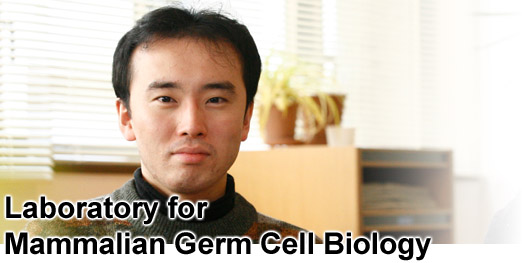





      |

Mitinori SAITOU, M. D., Ph. D. 
All of the diverse cell types in the body can be broadly classed as either somatic or germline cells. In contrast to somatic cells, which work to maintain the constant, stable form and function of an individual organism’s body, germ cells provide the faithfully-replicated information needed to establish subsequent generations of individuals. In order to fulfill this role, these cells need to exhibit certain unique properties, including the ability to revert to a state of developmental totipotency, to undergo epigenetic reprogramming, and to divide meiotically. Ultimately, through fusion with another germline cell, they give rise to an entirely new organism.
Research in our laboratory is geared to elucidating the developmental bases of germline function at the molecular and systems levels from the very earliest stages of germline development. Specifically, our subjects of interest are the molecular mechanisms involved in the formation of mouse primordial germ cells (PGCs), the cellular progenitors of sperm and oocytes, the genome-wide epigenetic reprogramming that takes place immediately following PGC establishment, and the development of technologies to enable the analysis of transcriptional regulatory networks at the single-cell level.
In the mouse, PGCs are first specified during early gastrulation, around day 7 of embryonic development, as a small group of about forty cells in the extraembryonic mesoderm. Our single-cell comparative analyses with cells of somatic fate revealed the molecular mechanisms underpinning germ cells’ acquisition and maintenance of totipotency and their escape from somatic differentiation. Epigenetic studies further showed that PGC chromatin structure is extensively remodeled following their formation. These findings suggest that mammalian germ cell development relies on specific inductive signals targeting cells that would otherwise be destined to somatic fates, leading us to propose that the mechanisms of germline development (both totipotency and epigenetic reprogramming) are ultimately determined by genetic programs. A microarray analysis system currently being developed in our lab will further the study of transcriptional dynamics in this system, while the analysis of mutant phenotypes showing defects in germline development is looked to provide clues regarding the roles of molecular families of interest. By elucidating the logics underlying the germline system, we hope one day in the future to be able to manipulate somatic cell properties epigenetically.